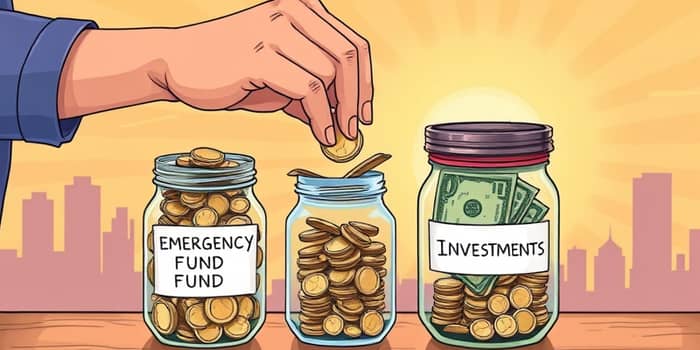
Every journey toward financial freedom begins with a single, crucial step: securing your stability before chasing higher returns. Imagine walking a tightrope; an emergency fund acts as the safety net that prevents one misstep from turning into a fall.
By creating a solid reserve, you build the confidence and freedom needed to invest without fear of unexpected setbacks.
An emergency fund is a dedicated savings reserve designed to cover those unexpected expenses in life—medical bills, car repairs, sudden job loss, or urgent home maintenance. Unlike vacation savings or retirement accounts, this fund exists solely to handle true emergencies.
Think of it as a financial buffer to cover emergencies when they strike. It safeguards your long-term savings and prevents you from resorting to costly credit options or prematurely liquidating investments.
Without a robust fund, even a minor financial shock can send your budget and long-term goals off course.
First, it provides peace of mind and financial stability. Knowing you have a cushion allows you to make measured decisions, rather than react with panic.
Second, tapping into your investments during a crisis can lock in losses. An emergency fund helps you avoid impulsive withdrawals from investments and keeps your strategy intact.
Finally, it stops you from falling into the cycle of high-interest debt that can stem from credit cards or payday loans.
Financial experts universally recommend saving the equivalent of three to six months’ worth of living expenses. This range balances preparedness with practicality.
In 2025, the average American household needs about $35,000 to cover six months of expenses, yet the median savings balance is just $8,742. If even that full buffer feels out of reach, remember that starting small matters. Just $500 can cover most minor emergencies and prevent high-interest borrowing.
Creating your safety net need not be overwhelming. Follow these steps to make steady, measurable progress:
Consistency is key. Even modest contributions add up over time, building momentum and confidence.
Your fund must be both liquid and separate from your everyday accounts and long-term investments. Consider a high-yield savings account or money market fund that offers quick access without penalties.
A dedicated account reduces temptation to dip into the money for non-emergencies. Label it clearly—out of sight, but never out of reach when you need those funds most.
Emergencies come in many forms, but the most typical include:
Avoid these pitfalls: using the fund for wants instead of needs, failing to replenish after use, or keeping the money too hard to access when seconds matter.
Once you’ve established at least a three-month reserve, you create a reliable springboard for investing. You can pursue stocks, bonds, or real estate without the nagging worry of a financial emergency derailing your plans.
This approach ensures you follow a disciplined path, leaving you free to target long-term growth and seize opportunities as they arise.
Building an emergency fund is an act of self-care and foresight. It shields your future, reduces stress, and lays the groundwork for confident investing.
Start now: calculate your expenses, open a protected account, and schedule your first automatic transfer. Each deposit is a vote of faith in your security and a step toward lasting financial freedom.
References













